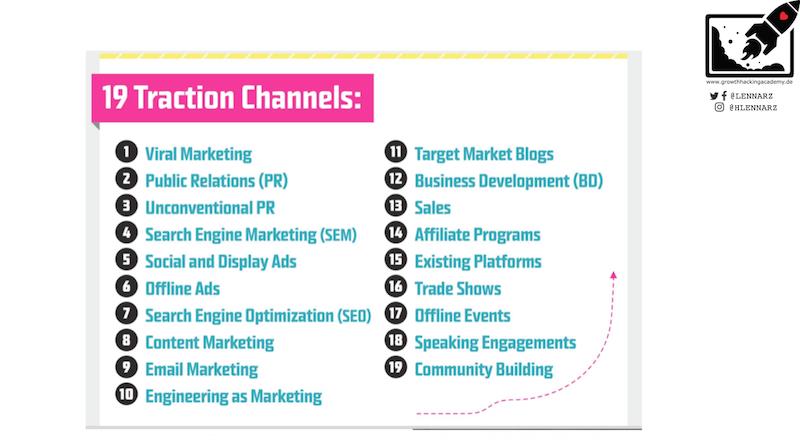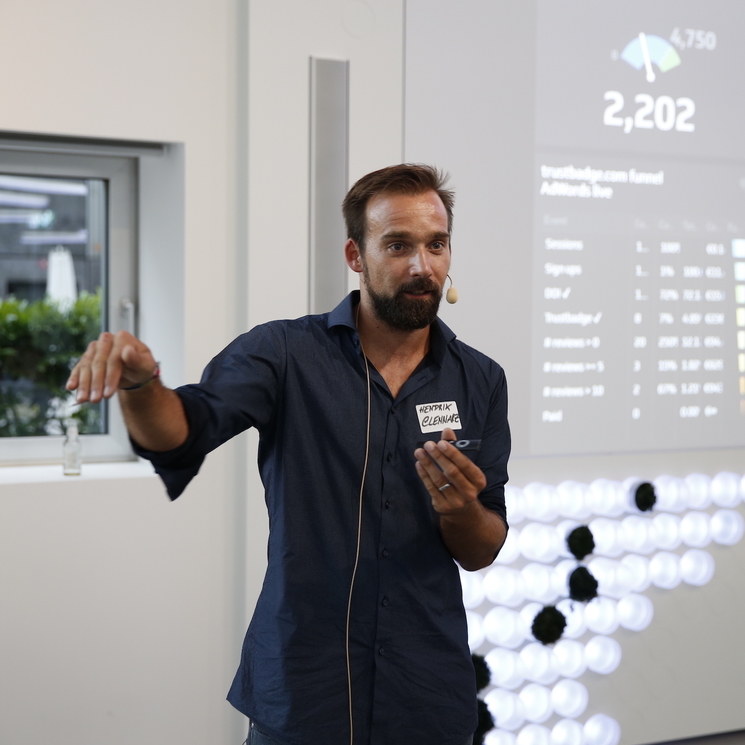You can´t imagine how many times I´ve got asked, how I came to the term “Growth Hacking” the first time. The answer is quite simple and always the same: “I read a blogpost on techcrunch.com in 2014 from Aaron Ginn with the title „Defining A Growth Hacker“. And immediately the term “Growth Hacking” caught my attention. Finally, I found my personal job description, so that I can explain my mother after so many years working what I really do the whole day. Unfortunately, I haven´t made it to a doctor or a lawyer, like my sister. Jobs everybody knows what it is good for, right? But what happens, if I would tell my mom now, that I´m a Growth Hacker? Probably nothing special, because she would have no clue. If I would explain her that I help companies to build better products and to find more satisfied customers, it becomes a little bit better, maybe.
Unfortunately, I have to explain it every month again – and not only to my mom – but anyway. So what are the goals of a Growth Hacker? Something like: ”Maximizing the number of users for your product or service and providing these users real value, that they are keen on using (and finally paying longterm for) the product.” This is exactly what I do for more than 12 years now, after I started my carrier for Trusted Shops – the ecommerce trust solution provider no.1 across Europe. What a nice job title “Growth Hacker”, right? As mentioned before, it was love at first sight.
Giving existing things a new idea and claiming it with a new name is something what the US guys are really good in. So much better than we Germans, but we can do it 100% legally correct – but that is another story.
Finally, I´m a Growth Hacker and I haven´t known before, that my daily job has such a cool job description. I like find out what Growth Hacking is all about and what the difference between Growth Hacking and Growth Marketing really is.
What is Growth Hacking?
There are so many different definitions and quotes of “Growth Hacking” out there. So, here is my mine:
“Unfortunately, it´s never the one and only Growth Hacking idea, that leverages exponential Growth for a startup or a company. Even more, it is a hard process challenge consisting of at least 4 main disciplines: Customer centric product development, positioning of a scaling business model, finding the best scaling marketing channels and finally an agile execution approach. The better you achieve to combine these disciplines, the higher is the chance to win the challenge.”
The Growth Hacking Process V2.0

#1 You need an excellent product
Don´t burn money with Growth Marketing, without being sure, that you have a product or service, that suits a validated customer need.
Try to get as many genuine feedbacks from your potential target group as possible, before you start scaling your marketing efforts.
You have to work on your product positioning and value proposition. What makes your offer special? Where is the difference to the competition? What are the real customer needs and pains you can solve? Best price, best quality, local advantages, unique features, best consulting/support, best user experience, special interest, etc.? Sounds boring? Sorry. But, these questions are essential for success and the only solution for not burning money and time later on. If you fail, fail fast.
One more? Repeat the validation process for your customer needs and market positioning regularly, because today everything can change due to technological progress and movements in the markets within weeks (or days).
#2 You need a scaling Business Model
The “Business Model Canvas” framework should belong to the homework for every startup or new business development teams. It´s better than writing a 100-pages business plan and consists of 9 most essential questions for your business model. My personal recommendation is to update the canvas once a month or at least once a quarter, in collaboration with your team. Most CEOs or bosses hate it to discuss these important questions with the team, because they fear not getting their own opinion confirmed. But this is exactly the idea of an agile leader, who is open for any feedbacks all the time.
For example, there are always a lot of options to find the typical customer or the right target group. As a startup in the beginning it is so important to focus on just one target group and to offer them a perfect product experience. Instead of trying to satisfy 3, 4 or 10 different target groups. That implies, that you have to deprioritize ideas and feedbacks from all other target groups. Sounds stupid? Could be, but in the beginning focus is even more important than in a later stage.
In terms of a scaling business model you have to think about your pricing strategy – maybe the champions league of all product management disciplines. Cheaper, same price, or more expensive – how should I position the product in the market? Do I offer just one package or bundling? Do we have a free offer? What is it – Freemium, Free-Trial? Do the customers pay monthly or annually? What about cancellation rates and the holy Growth Hacking grail “Monthly recurring revenue”? As you can see, woow, so many questions. Where to start? Ask your customers, which pricing parameters fit their needs best and than give it a try.
#3 Focus on the best performing marketing channels

Source “Traction: Gabriel Weinberg“
“Hendrik, what is the marketing channel we should start with?” or “Hendrik, which marketing channel should we focus on?” or “Hendrik, we want to automate our marketing channels, can you help us?” Oh my god, so many questions again. My boring answer is “Sorry, I have no idea. We have to find out.” A good starting point is to brainstorm around the idea.
Where can we find our typical target group today and how could I talk to them? Is there a special marketing-channel like Google, Facebook ads, Facebook groups, Pinterest, Instagram, Affiliate-Marketing, Guestposting, Content-Marketing, Sales, newspapers, partners, or whatever?
To find the famous sweat-spot of Growth marketing, the automated marketing channel that brings tons of active users for cheap customer acquisition costs, you have to setup a valid tracking system.
Best customer lifecycle tracking framework is the Pirate-Metrics or AARRR-metrics framework from Dave McClure. This tracking framework seperates the typical customer touchpoints for an app or a Software-as-a-Service business in 5 dimensions.
- Acquisition: Where do the users/visitors come from?
- Activation: How many users made the signup, registration or whatever is necessary for your product? But a single sign-up is not enough, right? Users must confirm the Double-optin-Mails, login the first time or use your service the 1st time to feel the real value.
- Retention: How many users are coming back and login again? Use the service the 2nd, 3rd, 4th or 5th time a day? You have to measure how addicted the users are to using your service. The more the better.
- Revenue: The higher retention rates are, the higher is the probability that users will be satisfied with your service. That increases the probability that they will pay for your product/service or upgrade to a higher plan or extend their subscription period.
- Referral: Satisfied customers are much more likely to recommend your service to their friends or collegues. So track, how many people are sharing your service today and think of what you could do to make sharing easier. One of the cheapest and best converting marketing channels.

#4 Agility: Be faster than possible
Product development, business model – and marketing strategy are really essential for being successful with Growth Hacking. But the best strategies are not worth a cent, if you´re not able to execute them. So #4 of the Growth Hacking Process V2.0 and maybe the hardest part is “Execution”.
If you are a startup, you have to be very fast in finding out what works and what does not. But do you know what? Corporates have to do exactly the same. The only reason, that they don´t think so is, that their pressure is not that high, than it is for startups. But in the times of digitization the pressure is coming up now and corporates learned, that they have to think like startups do.
So how to increase your agility? Use the right tools, use modern agile project management methods, find the right people that have already or want to learn the digital skills you need, execute and test ideas as fast as possible on the markets. Learn how to think like your customers do or the customers of tomorrow will do? Not that easy, but as I know from more than 12 years working in the centre of this field, already, this is the real challenge.
Conclusion
Congrats, you made it until the end of this post. I hope you know better now, why Growth Hacking is not only this one awesome marketing idea. It is a process consisting of product development, a scaling business model, find the right marketing channels and a high-speed execution spirit.
If you want to learn more about Growth Hacking download your ebook, checklist and poster here and save your free ticket for the Growth Europe Summit taking part in May 2018.
CU soon at inorbit18 😉


